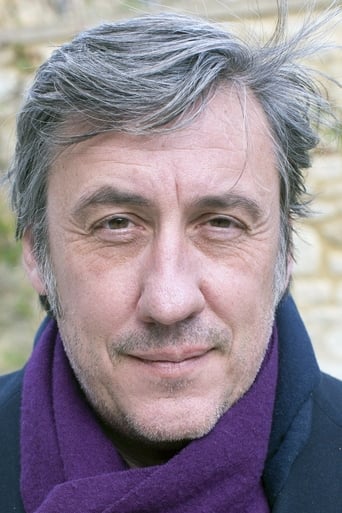PlatinumRead
Just so...so bad
DipitySkillful
an ambitious but ultimately ineffective debut endeavor.
PiraBit
if their story seems completely bonkers, almost like a feverish work of fiction, you ain't heard nothing yet.
Nicole
I enjoyed watching this film and would recommend other to give it a try , (as I am) but this movie, although enjoyable to watch due to the better than average acting fails to add anything new to its storyline that is all too familiar to these types of movies.
leplatypus
i'm not into painting as it's an really overrated art and a field described as important just because the wealthy elites have fun with their money. However i like history, craft and mysteries and the story of Joconde has everything: This documentary is really captivating as it tries to guess exactly what happens 500 years ago and it's amazing to see that clues are limited and that the most famous painting in the world now was really not that hot when it was painted! It's funny to see that people claims to have another Jocondes and it's even more pathetic to see that they hid their painting into secured vaults! I'm happy to learn that a french has invented an amazing camera to study paintings (yet never told in our country) and i'm perplexed about the result: if the two paintings have been made on the same canvas, where are the famous colons drawn by Raphael? The analysis never tells about them and i found that a bit strange...
l_rawjalaurence
What a lot of historical balderdash SECRETS OF THE MONA LISA actually is! Purporting to give definitive answers to the origins and subsequent fate of the famous painting in the Louvre, it only succeeded in casting doubt on whether "history" and "fiction" are really only two sides of the same coin insofar as they tell stories to incredulous listeners.Presented by Andrew Graham-Dixon - in an attempt to give the program some authenticity - this documentary used a combination of historical narratives and state-of-the-art technology to get at the "truth" behind the painting. Yet we were knew we were on theoretically rocky ground when Graham-Dixon kept insisting that many of his interviewees were "experts" in their specific fields. Some of them had a distinctly dubious due; one, a French boffin with a penchant for using computer scans and other hardware, evidently worked in secret in his Paris lair. No reason was actually given, but the statement lent his testimony a cloak-and-dagger aura that seemed a little odd, to say the least. Graham-Dixon was dragged off to St. Petersburg to see another copy of the painting at a "secret address": we only needed the presence of deliberately conspicuous KGB agents to be transported back into the dark days of Soviet Russia when any westerners were automatically perceived as suspects.Even Graham-Dixon seemed faintly dubious of his quest. Although marveling enthusiastically at each new scientific discovery, his reactions seemed rather forced, as if he were trying to affirm the truth of what he saw while secretly disbelieving it. There was none of that childlike enthusiasm that characterizes his television performances while talking about art history and explaining the nuances of a particular work of art.In the end the documentary proceeded, parabola-like, to a conclusion quite opposite to what it set out to do; rather than explaining the mysteries of the Mona Lisa, it proved beyond doubt the painting's inscrutability - and hence its fascination - for millions of art lovers past and present.

